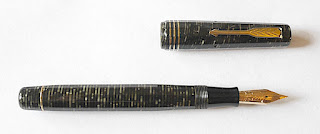Canyon de Chelly
“Busy” day today at the Canyon de Chelly (and it’s
pronounced Shay, a corruption of the Navajo, “tsayi”).
We began the day with a vehicle tour of the canyon floor.
These can be done only with a guide and a backcountry permit. Our guide was
Terrill Spencer, despite the name, a Navajo.
Apparently man came to live in the canyon with the advent of
the people often (and controversially) called the Anasazi around 700AD. It was
they who built the cave and cliff dwellings the ruins of which you will see in
the images below. No one knows why they left about 300-400 years later. The
Navajo, Hopi and Zuni all moved back into the canyon later, around 1200 and it
seems that people have lived on the canyon floors since.
What is remarkable is that people still live in the canyon
today. Almost all the Navajos we have spoken with have family members who have
land holdings and who spend summers down there.
What there is to see here is the “written” and
anthropological record of man in the canyon.
What is written is literally carved in stone and painted on the rocks.
The record of events, habitation and the like of the people who lived here.
More remarkable yet are the ruins of what they built, villages carved into and
out of the rocks, high above the canyon floor. Looking at images of these they
often seem like miniatures, but people lived in them.
After Terrill left us, we toured the North Rim of the canyon
by car and on foot from the overlooks, some of which are not easy to reach and
must have been built many decades ago.
There’s a lot that could be said about this place. At one
point near the end of the day, standing alone at a remote and windswept
overlook, I heard music from a flute. Not I thought I heard music, I heard
music, so clearly that I looked around to see some nearby source. There was
none. Whether it was the music of the Anasazi or something more recent and
“real,” I have no idea.
And there is a lot that could be said about the Navajo
Nation, though I first want to thank the officer who stopped, but did not write
me, for rolling a stop sign. The Navajos are more modern and adaptive than the
Hopi, their family structures and housing conforming more to that of the
mainstream culture. Terrill said that as many as half the Navajo follow
Christianity. But they still seem to suffer some of the same ills their brethren
do.
All that said, I feel that this aspect of our trip has
enriched my understanding of the native peoples of America and how they live
their lives in a culture that is so foreign to their values. Tomorrow we are
off to another of the centerpieces of our trip—Santa Fe, where we will be for a
week.
 |
| The petroglyphs tell a story here of a birth (kokopeli on his back with a snake approaching from the left, a birthing woman and the handprints of the family or clan |
 |
| They look like miniatures, but here a village in a cleft in a rock, one of many in the canyon |
 |
| The view from the canyon floor. Terrill said that in winter the water would be 10' deep, though not this last year |
 |
| Terrill and Sharon in our trusty Jeep Wrangler |
 |
| The first white man to see these dwellings, JV Conway of Santa Fe, left his mark in 1879 |
 |
| A modern day dwelling. Most move down here once the children are out of school for the summer. |
 |
| Here you can even see some of the vigas used to support the roof |
 |
| The building on the left is a hogan, the traditional Navajo house |




.jpg)









Comments